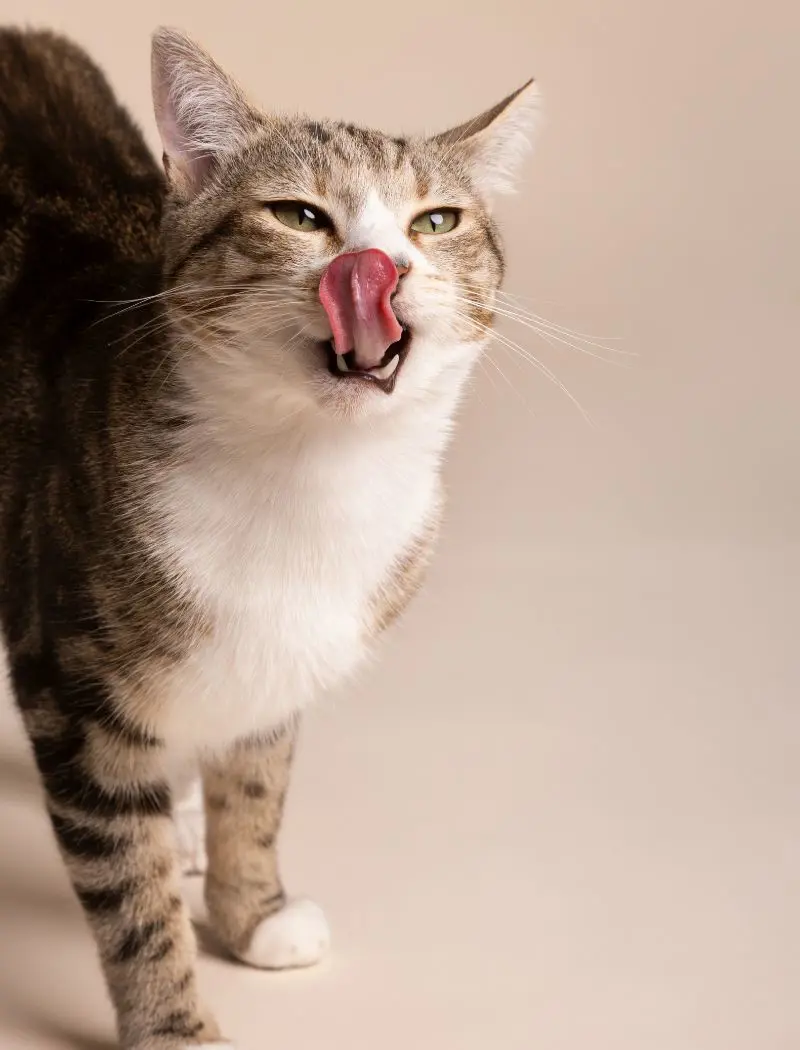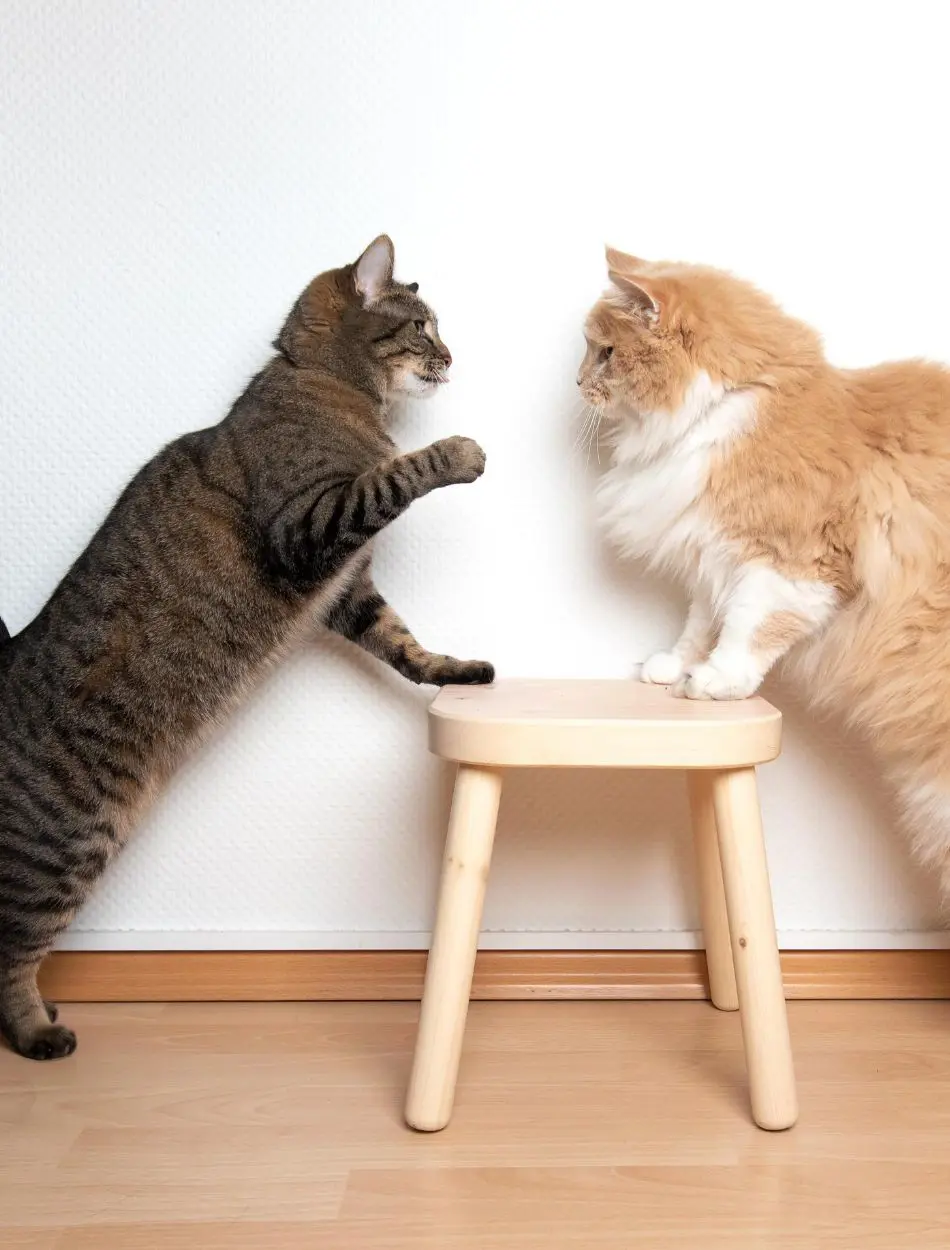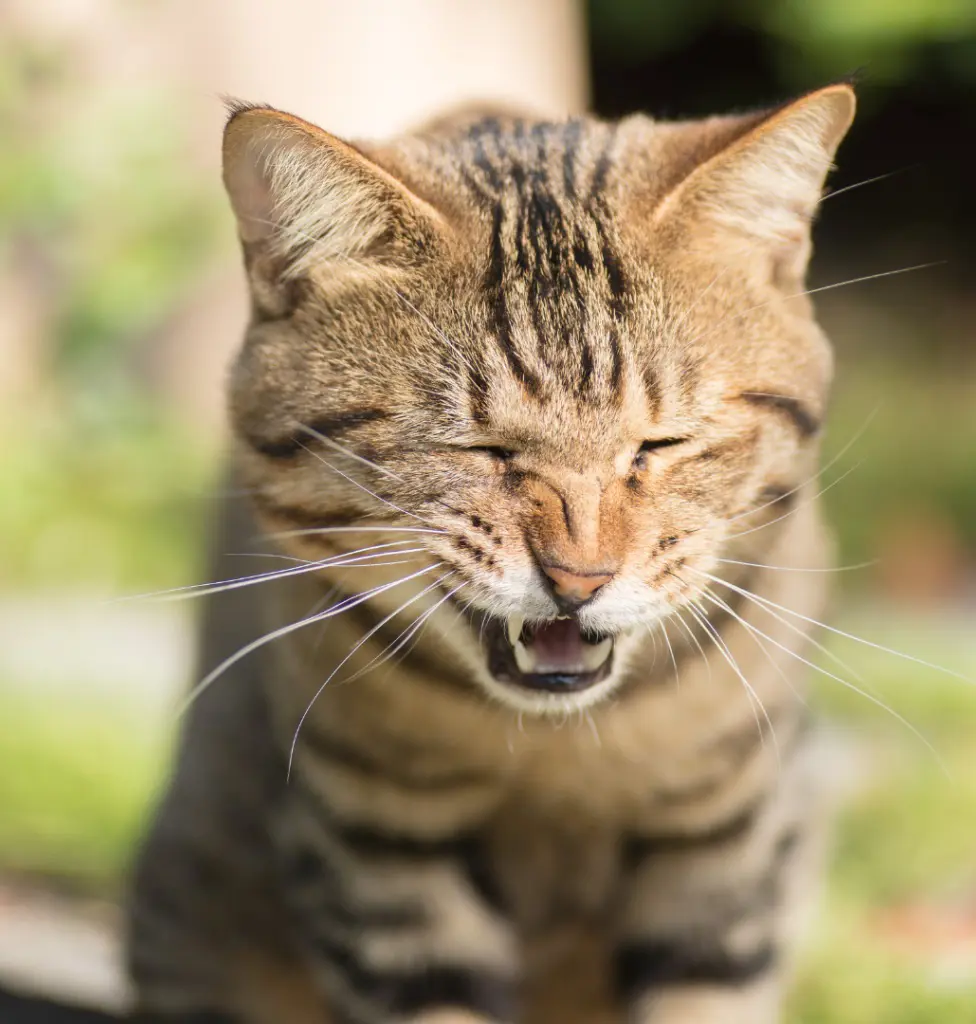How To Clean Cat Litter Box

Keeping your cat's litter box clean is essential for their health and your home’s hygiene. A well-maintained litter box not only ensures a pleasant environment but also encourages your cat to use it regularly.
Regular cleaning of the litter box helps reduce odors and minimizes the spread of harmful bacteria. By following a consistent cleaning routine, you can create a comfortable space for your cat and maintain a fresh-smelling home.
Steps To Clean Cat Litter Box

Daily preservation is required to keep your cat’s litter box clean and odor-free, which is crucial for the health and consolation of both your cat and your household. To carry out daily maintenance, use a committed scoop to remove waste and ensure you dig deep adequately to capture all clumps.
Gather Supplies
Before starting the daily cleaning of your cat's litter box, it's important to collect all the compulsory supplies to make the process systematic and hygienic. Required tools comprise a purposeful litter scoop, which is correctly designed for sifting along cat litter to remove clumps of urine and feces.
Using a scoop with inserted holes allows clean litter to fall across, making it easier to cast out only the waste. Replaceable gloves are also important to safeguard your hands from bacteria and germs present in the litter. If you're aware of dust or odors, consider wearing a face mask to reduce inhalation of dust particles and horrible smells while cleaning.
Scoop Out Waste
To carry a clean, odor-free litter box, it's important to scoop out waste daily. This step is requisite for supporting hygiene and escaping direct contact with possibly damaging substances.
Using a litter scoop, remove clumps of urine and solid waste from the litter box. Spoon deliberately and orderly, moving the scoop through the litter from side to side. Once you’ve collected the clumps, discard them in a small trash bag or litter dumping system, tying the bag compactly to contain odors.
Dispose Of Waste Properly
Actual getting rid of dirt is a key part of keeping a clean and odor-free litter box. After scooping out a cluster of urine and feces from the litter box, place the waste into a small trash bag or a litter ditching system designed to contain smells.
When using a trash bag, make sure it is firmly tied to prevent any waste or odor from clearing. This step is decisive in stopping scent from assembling indoors, which can in other ways make your home surroundings terrible.
Check Litter Levels
After clearing away waste from the litter box, it's important to check the litter level to confirm it remains desirable for your cat's relief and hygiene. The litter should be relatively 2-3 inches deep to provide a favorable environment for your cat to dig and cover its waste.
This depth lets your cat plow warmly and helps to soak up dampness and odors adequately. If you observe that the litter level has reduced due to the taking away of clumps, it’s necessary to add more litter to keep on the correct depth. Continuing the proper litter depth also helps to head off the litter from becoming too tight or uneven.
Clean the Area Around the Box
Maintaining cleanliness around the litter box is a prime aspect of daily litter box upkeeping. Spilled litter can be followed all around your home, leading to a messy environment and probably causing further cleaning tasks.
Start by using a damp cloth or paper towel to wipe down the areas around the litter box. Delicately scrub any dispersed litter to make sure it is picked up and cast out properly. This helps prevent the layout of litter particles and brings down the chances of them being walked through the house, which can come up with more cleaning and potential mess.
Deep Cleaning
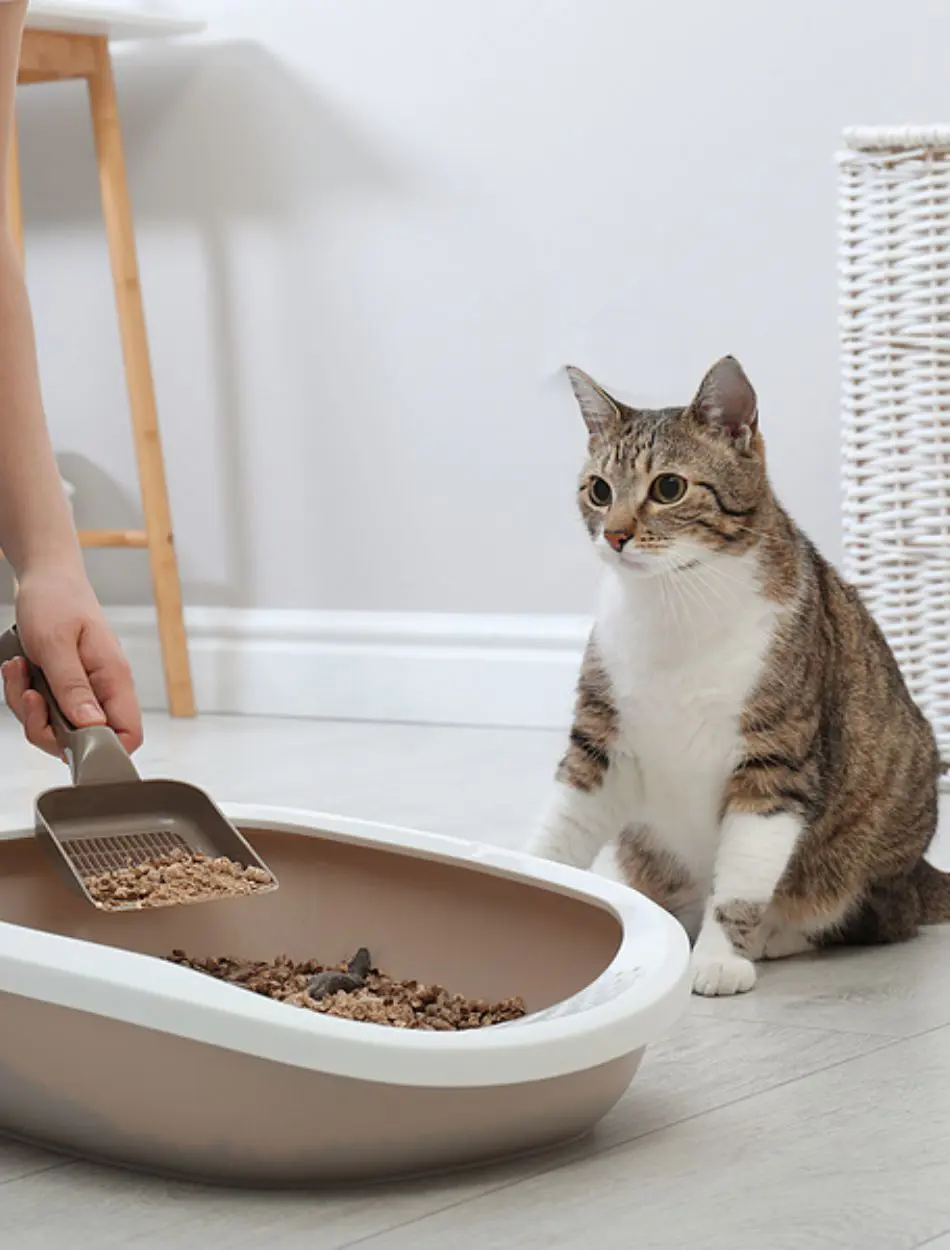
To start the huge wiping action, vacant all the old litter from the box into a trash bag. Be sure to wear expendable gloves to protect your hands from bacteria and litter dust.
Empty the Litter Box
To continue a fresh and hygienic litter box, you're required to empty the litter box during your weekly deep clean. If you have a litter dumping system, barren it into this bag as well.
After the litter box is blank, use the litter scoop to spread off any litter or waste that may be stuck to the bottom or sides of the box. Supplementary urine can cause litter to clutter and comply with the box's surfaces, which can harbor bacteria and hand out displeasing odors if not rigorously cleaned.
Scraping away this residue ensures that these areas are appropriately cleaned and sanitized during the washing process.
Clean the Litter Box
Cleaning the litter box meticulously every week is required to maintain a sanitary environment for your cat. Start by rinsing the litter box with warm water to detach any remaining litter fragments and loosen any debris stuck to the box.
Using a brush or sponge, scrub all surfaces, which are in the base, sides, and corners, where waste can often be assembled. It’s important to use mild, fragrant soap because cats are conscious of powerful smells.
By exhaustively cleaning and drying the litter box, you maintain a fresh and inviting space for your cat, encouraging better hygiene and solace.
Add Fresh Water
After meticulously cleaning and depleting the litter box, the next step is to add fresh litter. Start by discharging enough litter to create a depth of 2-3 inches.
As you pour in the litter, make sure to unfurl it fairly across the bottom of the box. Cats favor a smooth, even exterior for digging, so it’s important to avoid creating any high or low spots, which can make the litter box less tempting. After adding fresh litter, slightly shake the box back and forth to level it out.
Scrubbing And Deodorizing
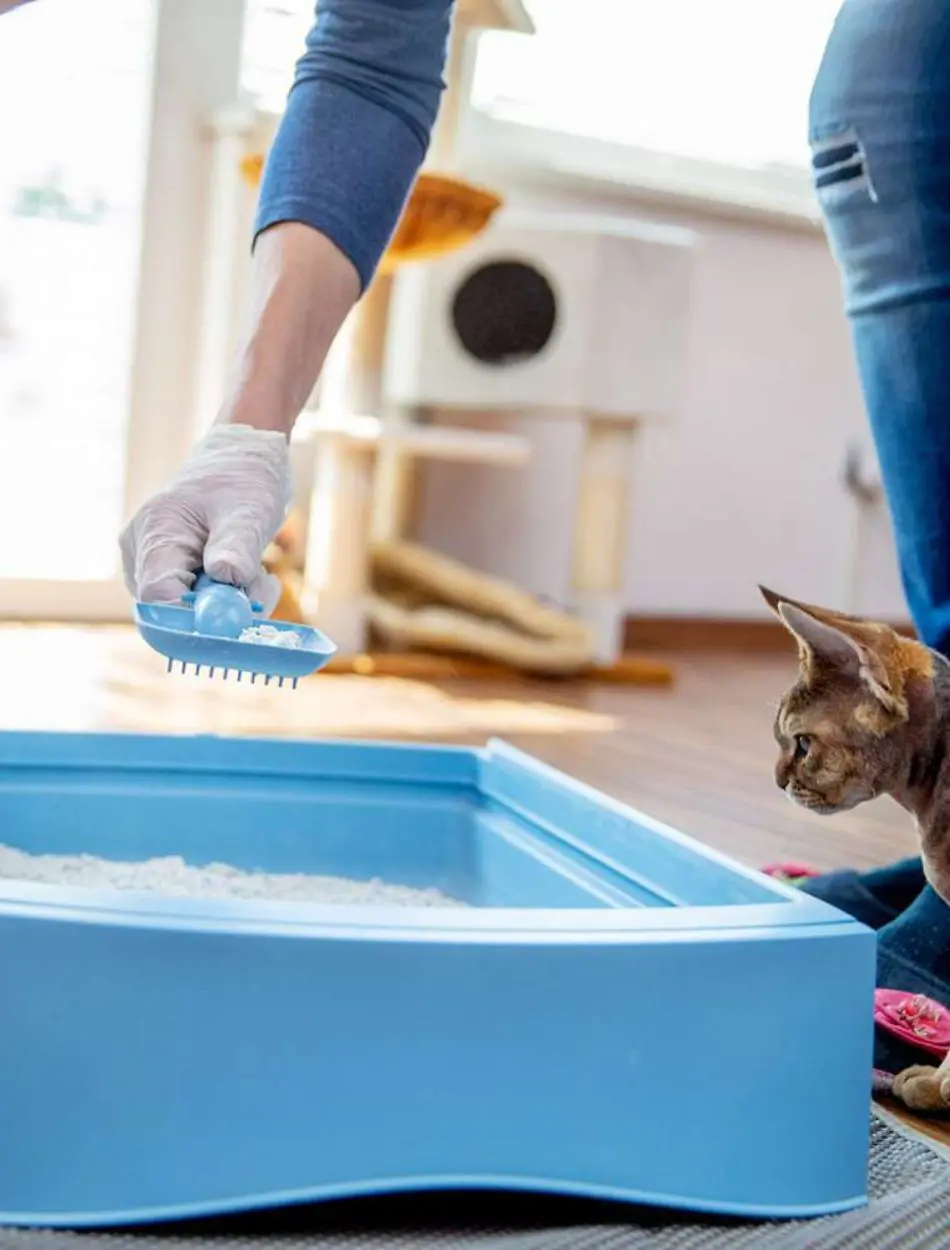
Carrying out a more exhaustive scrubbing and freshening of the litter box is pivotal to conserving a fresh and odor-free environment. This deep wipe goes beyond the quality weekly wash to abolish any lingering bacteria, stains, and odors that can build up over time, even with regular care.
The cleaning should involve complete loading of the litter box and an extensive wash with a stronger cleaning solution, such as a vinegar and water mixture, which can help break down any residue and counteract odors more productively than mild soap alone.
Disinfecting the box with a safe, pet-embracing solution can help eliminate deep-seated smells that might deter your cat from using the box. Regular maintenance not only controls odors but also provides a more pleasant environment for your cat.
Choosing The Right Litter And Box
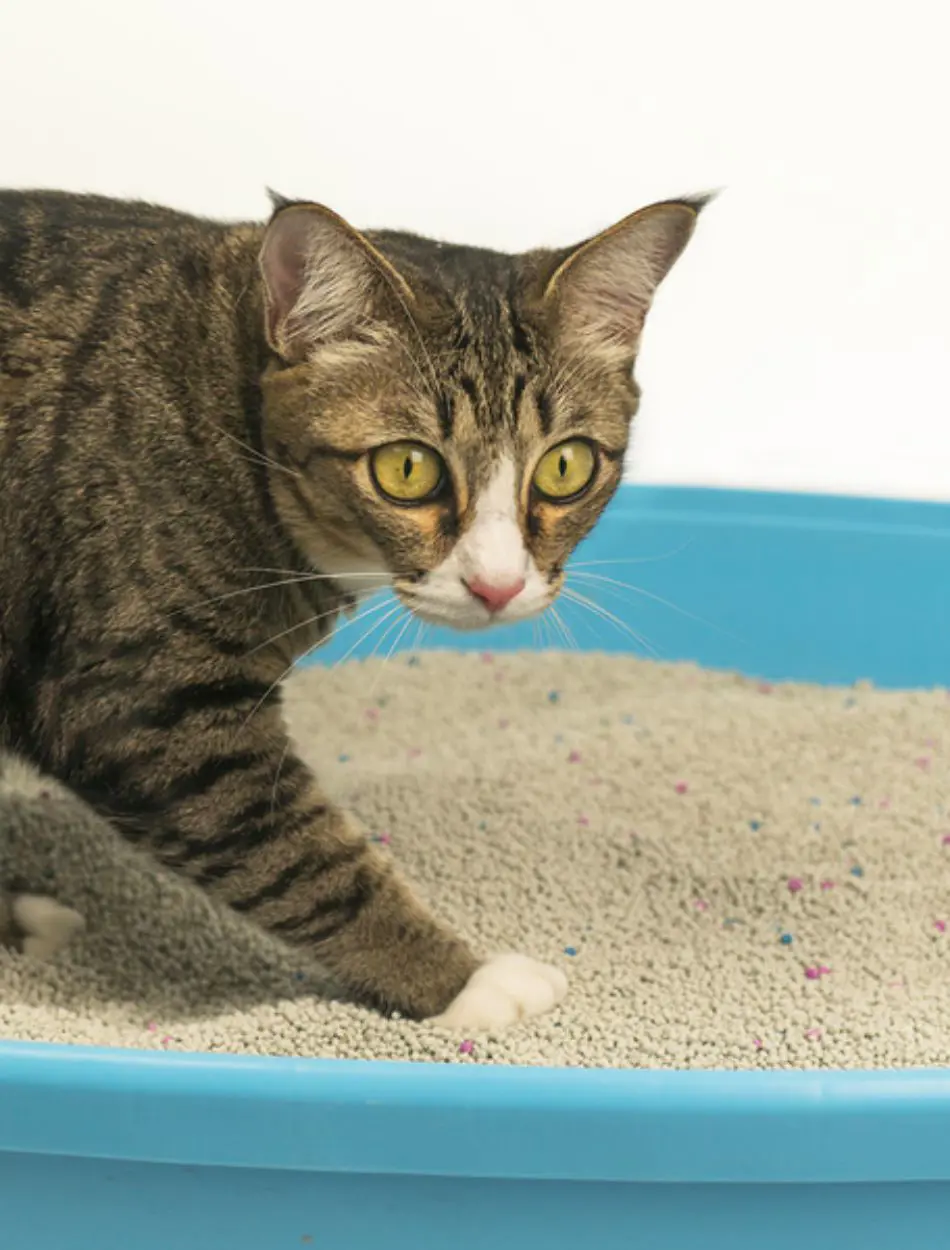
Before minding the cleaning routine, selecting the right type of litter and litter box for your cat is key to ensuring both hygiene and relief. The choice of litter can crucially impact how time and time again the box needs to be cleaned, how well it controls odor, and how pleasant your cat feels using it.
Clumping Litter
Clumping litter, generally made from bentonite clay, is a popular choice for many cat owners due to its ease of use and efficacy in controlling waste. This type of litter forms solid clumps when it comes into contact with wetness, such as urine or feces.
The clumping action makes it easy to scoop out waste, permitting you to remove soiled sections without having to change all the litter. This attribute not only makes daily cleaning speedy but also helps broaden the life of the litter, and lessen waste and cost over time.
Many clumping litters are also permeated by odor-counterbalance agents like baking soda or operating charcoal, further magnifying their capacity to control a whiff.
Non-Clumping Litter
Non-clumping litter is a customary type of cat litter repeatedly made from clay or silica. These trademarks can be favorable for odor control in the short term, as the litter soaks up and masks smell rapidly.
However, because it does not clump, the waste remains in the litter, which can lead to the growth of odors and bacteria over time. One of the main dominances of non-clumping litter is that it's reasonable. non-clumping litter needs more recurrent changes to maintain cleanliness and control odors successfully.
Biodegradable Litter
Decomposable litter is an ecological source of traditional clay-based litter, made from natural materials like recycled paper, corn, wheat, pine, and even walnut shells. This type of litter is depicted to be environmentally friendly, breaking down more easily.
It is a great choice for environmentally wide-awake cat owners who want to lessen their carbon footprint. Compostable litter is available in both clumping and non-clumping varieties, offering flexibility to suit your cat’s preferences and your maintenance routine.
Importance Of Cleaning Litter Box Regularly
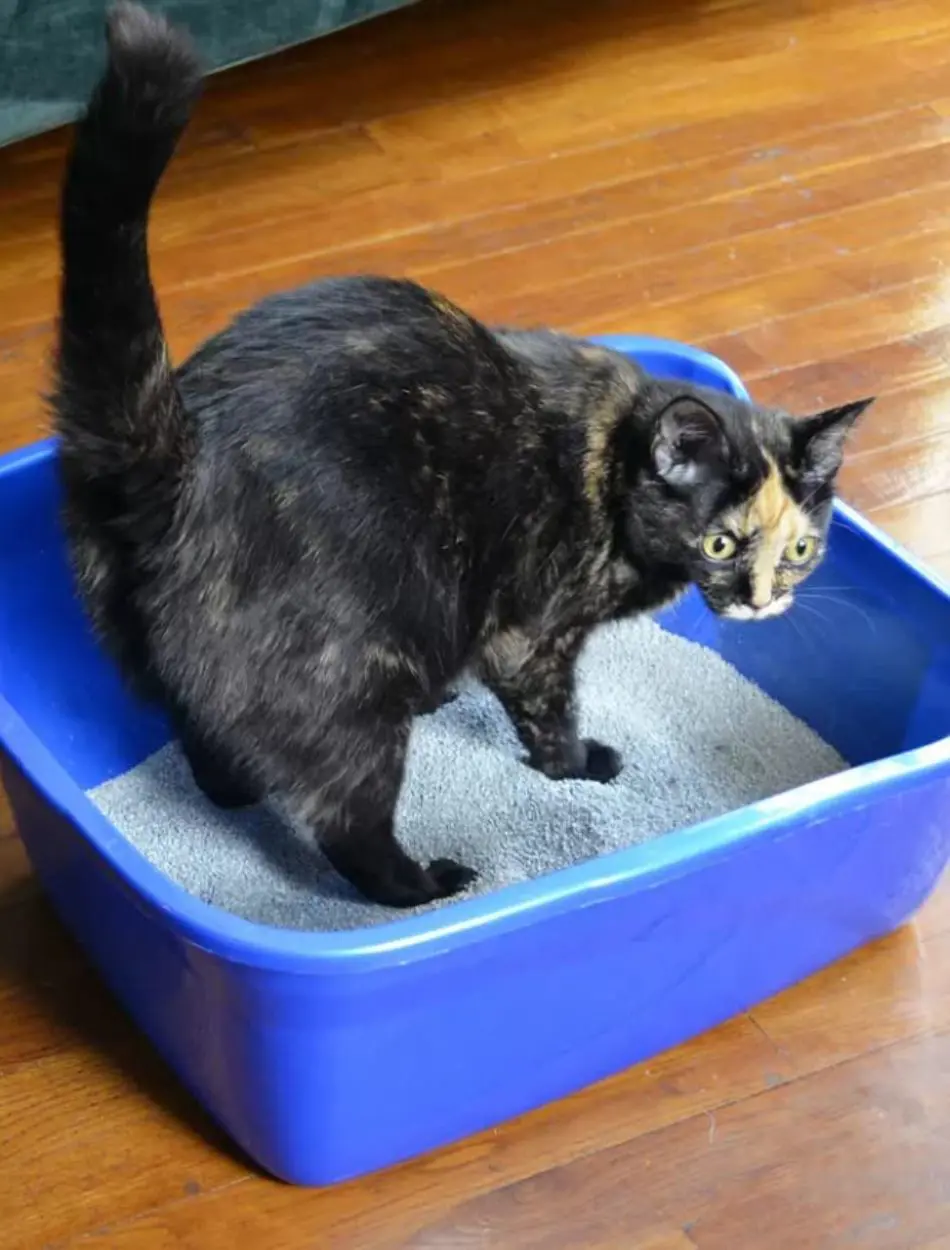
Cats are spontaneously clean animals and firmly choose a well-kept-up litter box. If the box is not cleaned routinely, cats may find it displeasing and ignore it, foremost to accidents around the house and possibly causing tension for both the cat and the owner.
Prevent Odor
A filthy litter box can speedily become a source of nasty smells in your home. The expansion of cat urine and feces let out ammonia, a foul-smelling chemical that can be unusually unkind to the senses.
In addition to ammonia, bacteria can develop in a dirty litter box and, more distantly, come up with an awful smell. These smells can spread on the far side of the immediate area, making your living space intolerable for you and your cat. Well-ordered scooping and cleaning are necessary to stop these odors from becoming inordinate. Maintaining a clean litter box not only controls distressing smells but also stimulates your cat to use the box steadily.
Promote Cat Health
Managing a clean litter box is pivotal for advancing your cat’s health. A dirty litter box can become a breeding ground for bacteria, which increases the risk of infestation for your cat.
One of the most habitual health issues interconnected with a dirty litter box is urinary tract infections (UTIs). A dirty litter box can lead to other bacterial infections, such as skin infuriation and respiratory issues, mostly if ammonia from cat urine builds up. Regular cleaning of the litter box helps ward off these risks by separating waste and diminishing the assembling of harmful bacteria.
Maintain Hygiene
Keeping a cat's litter box clean is necessary for maintaining general hygiene in your home. A dirty litter box can harbor germs and bacteria that not only pose a risk to your cat's health but can also affect the welfare of your entire household.
Efficient cleaning of the litter box intercepts the build-up of bacteria and brings down the chances of these germs escalating to other areas. Daily cleanaway removes waste, the primary source of germs, while weekly deep cleaning with soap and water makes certain that the litter box remains sanitary. This keeps down the risk of infection and allergic reactions, securing a safe and enjoyable space for everyone in your home.
Recent posts
Cats
Why Is My Cat Not Drinking Water
Cats are notoriously finicky when it comes to water consumption, and it's natural to worry if your canine companion isn't drinking as much as you expect. From environmental preference to a simple behavioral quirk, many factors can contribute to the c...
Why Is My Cat Nose Wet?
If you have a pet cat, you might have noticed their wet nose and wondered why my cat's nose is wet. Does a cat's wet nose signify something or is it very normal? these questions might have popped up in your head at least once. It is normal for ...
18 Reasons Why Your Cat Is Snoring
While it may seem cute or amusing, snoring in cats can also be an indication of several underlying health problems that pet owners need to know about. Some light snoring is typical for certain cats, however steady or noisy wheezing could demonstrate ...
15 Hypoallergenic Cat Breeds
People are often more allergic to cats than to dogs. Unlike dogs, cat allergies are caused by the proteins found in their saliva, skin, and dander rather than fur. All cats inherently produce allergens, so no cat is truly hypoallergenic. However, som...
15 Ways To Introduce Your Cats Properly
Adding another cat to your household can be a whole excitement, but it may also become an anxiety-ridden experience, especially if you already have another feline companion in the house. Cats are territorial by nature, and being prematurely introduce...
17 Common Causes Of Cat Sneezing
While your cat's occasional sneezes are a natural reflex to get rid of irritations, regular sneezes need further examination. Upper respiratory infections, which are comparable to the common cold in humans, are one of the frequent causes. These infec...

